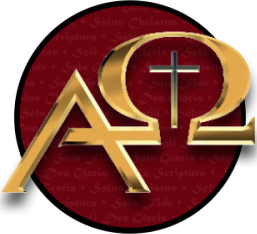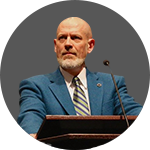A number of years ago Patrick Madrid and the folks at Envoy decided to take a shot at me regarding an article I wrote for the CRI Journal. Here is the original article. You will see it is about the Council of Nicea and is focused upon explaining the issues surrounding the issue of the deity of Christ. But Madrid and Hugh Barbour decided to use an article that was about the deity of Christ as a pretext for attacking me and my scholarship, and that based upon…a footnote. Yes, a footnote. What was worse, the reply itself was quite sub-standard, especially for a self-professed patristic scholar. And though the Envoy article was quite lengthy, I had to be quite brief in my rebuttal in the CRI Journal. Since Madrid has recently been promoting the article again (as has Prejean), and since it is not found on the CRI website, I provide it here. I think the fair-minded person will once again recognize that all is not well in Rome’s apologetics realm when they have to stoop to this kind of activity.
The cover of the July/August 1998 issue of Envoy magazine sports a man, dressed to look like a Baptist (replete with a very Baptist looking watch, a gold cross pin on his jacket, and a tie too ugly to ever be worn) holding a mask in front of his face. The mask is the face of an ancient Christian, possibly an early Church father. The title reads, “Who is that Masked Man?” The subtitle continues: “A Baptist tries to hijack the early Church. You know how he’d be punished in Singapore, don’t you?” The article itself, by Fr. Hugh Barbour, is titled, “Ancient Baptists and Other Myths.”[1] The article pulls no punches. Its opinions are clearly stated: “A Catholic expert on early Christianity debunks the fanciful claims of a Protestant apologist.” The article being reviewed is said to be “error-laden,” “amateurishly ‘researched,'” and “filled with historical and theological fallacies.” One subtitle reads, “The Absurd, and the Outrageously Absurd.” And Barbour ends with allegations of “cut-and-paste patristic work,” “feats of “scholarly” gymnastics,” and “grotesque historical contortions.”
What horrible, unscholarly article by some backwoods Baptist would attract the attention of Hugh Barbour and Envoy? The article was my own What Really Happened at Nicea? from the July/August 1997 edition of the Christian Research Journal. And while the thrust of that article was providing a response to common and false claims by cultists concerning Nicea and its definition of the deity of Christ, that was never mentioned in the Envoy response. The fact that Fr. Barbour would agree with the vast majority of what I presented also somehow didn’t make it into his article. Instead, the discussion I provided concerning the relationship of Nicea to Scriptural authority, and one particular sentence regarding Athanasius’ stand for the truth during the resurgence of Arianism after the Council of Nicea, became the target of this lengthy example of how to skewer your opponents without once touching on the issues that really matter.
Hugh Barbour uses some pretty strong language in his review. Of course, there is nothing wrong with such language, if, in fact, it is true. I have used the very same language in describing Gail Riplinger’s New Age Bible Versions, and have then gone on to demonstrate the truth of the conclusions I have reached. That is how Christian apologetics is supposed to be done: an honest representation of the position being examined, followed by a fair and full refutation. If my article was, in fact, grossly in error, nothing more than a cut-and-paste mockery of patristic sources, then there is nothing at all wrong in pointing this out. However, a little closer examination reveals some very troubling facts.
The first thing that struck me as I read Hugh Barbour’s article was this: not once, in approximately 4700 words of text, does the article name the “Reformed Baptist author of the Christian Research Journal article.” You will never find “James White” in the text of this article. All the way through, I am anonymous, a nameless and faceless person. Can you imagine encountering an article in the CRI Journal that would accuse someone of such shoddy scholarship, but would never tell you who did this poor job of research and writing? What kind of tactic is this?
The second thing that struck me was that while the CRI Journal is specifically mentioned, not once was the article’s bibliographical information provided. That is, Fr. Barbour would actually quote the article, but never give the date, issue, or page number. If a reader of Envoy wanted to check out the original source, they would not have an author’s name, date or issue. Their task would be daunting.
Immediately we should be struck by the contrast in methodology used by Envoy and that of the CRI Journal. There is a fundamental issue of fairness involved in providing at least the most minimal information necessary to allow your readers to check your sources and your conclusions. None of us are above the need to give our references and allow the reader to judge our fairness and accuracy. Surely it is easier to take anonymous shots at those with whom we disagree, but such shows disrespect to our readers. They must simply trust that we are being fair and accurate since we don’t provide any means by which they can examine our sources. And when we are making personal comments, impugning a person’s scholarship, research, and conclusions, we cannot hide behind the mask of anonymity and not allow “full disclosure” of the facts. One cannot help but wonder how many regular readers of Envoy likewise noted the glaring deficiency of this “scholarly” rebuttal.
But the most fundamentally disturbing aspect of this reply is to be found in its tremendous misrepresentation of the article it pretends to review. Over and over again Barbour argues that it was my intention to turn the council of Nicea into an ancient convention of Baptists. He writes, “The article. . . actually claimed the Fathers of the Council were essentially Evangelical Protestants.” But such is simply untrue. What I did say was that in the particular instance of Athanasius’ well-known stand against the combined weight of councils (such as the one held at Sirmium, attended by 600 bishops), bishops (including Liberius, bishop of Rome), and Emperors was not something that you would identify with Roman Catholicism, but with Protestantism, especially since Athanasius defended his action via his fidelity to Scriptural truth. Just because his actions were more consistent with modern day Protestantism than with Roman Catholicism cannot logically mean that I was identifying him as a full-blown Protestant. The early Fathers were neither Protestant nor Roman Catholic. They were who they were, and we badly misrepresent them, and end up engaging in errors of anachronistic interpretation, when we try to force them into our mold. As a Protestant, I can allow all the early Fathers to be themselves, not what I need them to be, simply because my faith is not based upon making claims about the alleged “universal” faith of the early Fathers. I can recognize both truth and error in the patristic sources, even within the same writer. I can appreciate Irenaeus’ defense against the gnostics, while rejecting his erroneous view of the atonement, for example. I need not gloss over those places where early writers would have disagreed with me, for I make no claim that they were infallible or perfect in their beliefs, since no Christian today would fit into that category either.
But the Roman Catholic, if he or she is faithful to the statements of the Magisterium, does not have this luxury. This can be seen in striking fashion in the words of Satis Cognitum, a papal encyclical promulgated by Leo XIII in 1896, written to explain and defend the definition of Papal Infallibility put forward by the First Vatican Council:
Wherefore, in the decree of the Vatican Council as to the nature and authority of the primacy of the Roman Pontiff, no newly conceived opinion is set forth, but the venerable and constant belief of every age.
The faithful Roman Catholic who seeks to defend the ultimate authority of the Roman magisterium is left with little choice than to believe that the Roman claims on the Papacy (and by extension, the entire Roman concept of authority) are the “venerable and constant belief of every age” (emphasis added).
The largest portion of Barbour’s article is devoted to skewering the straw-man idea that “the Council attendees were Protestant.” I never made such a claim, nor would I. Unfortunately, the main point I did make regarding Athanasius’ willingness to stand against the combined weight of bishops and councils was lost in the flourish of demonstrating what was not contested: that Athanasius wasn’t a Baptist. A wonderful opportunity was lost for this patristic scholar to explain why, if the members of the Nicene Council were Roman Catholics, they did not believe in the very doctrines that define the Roman communion over against others, doctrines such as an infallible Papacy, Marian dogmas such as the Bodily Assumption, the treasury of merit, indulgences, and devotion to reserved, consecrated hosts that would indicate that the patristic belief in “real presence” was in fact a belief in transubstantiation.[2] The fact is that the early Church was neither Protestant nor Roman Catholic. It was what it was. That’s perfectly in line with the Protestant view, but is fundamentally contrary to the Roman Catholic concept.
One Good Example
While I strongly disagree with Barbour’s attempt to turn Athanasius into a follower of the Papacy,[3] a different assertion in his article serves to illustrate best what happens when we view Church History in a partisan fashion. Barbour presents a highly questionable thesis regarding the role of the bishop of Rome, Sylvester, and the calling of the Council of Nicea. It is a well known fact that the bishops of Rome had little to do in the convocation of many of the early Councils. This presents a problem for the Roman apologist only because Rome has anachronistically claimed that she has always held that position. Modern Roman Catholic historians have abandoned this claim, preferring the less strident “development hypothesis,” agreeing with Newman that in the early Church the Papacy was more of an “unfulfilled prophecy.”[4] Barbour abandons sound historical procedures by pointing to the words of the Council of Constantinople, which met 355 years after Nicea, which claimed that both Constantine and Sylvester together called the council. R.P.C. Hanson, a noted historian, writes concerning this claim:
Religious partisanship has in the past led some scholars to suggest that Sylvester, bishop of Rome, convoked the council of Nicea, but modern Roman Catholic Scholars honourably dismiss this idea.[5]
Likewise, George Salmon describes as “less scrupulous” those who make Barbour’s assertion, saying that there is “no foundation” for the claim.[6] Roman Catholic historian and Notre Dame professor Richard McBrien likewise notes that Sylvester “played no part” in the proceedings of the Council of Nicea, that he “did not convene the council,” and that even Sylvester’s representatives “were given no special status” at the assembly.[7]
Barbour goes on to make an even more questionable claim when he cites Gelasius of Cyzigus (without reference) as his sole basis for making Hosius, bishop of Cordova in Spain, the representative of Sylvester, so that he can then assert, “So the Council proceeded, led by a bishop officially representing the Church of Rome.” Barbour, who begins his article by calling himself a “trained patristic scholar,” well knows the character of the source he is citing, but how many of his readers do? Gelasius wrote 150 years after Nicea. Renowned church historian Philip Schaff, speaking of the Council of Nicea, said, “There afterwards arose a multitude of apocryphal orations and legends in glorification of it, of which Gelasius of Cyzicus in the fifth century collected a whole volume.”[8] Hanson likewise makes mention of Gelasius’ claim:
Gelasius alleges that Ossius presided as representing the bishop of Rome, but this is probably because an historian writing in the second half of the fifth century could not imagine that a bishop of as obscure a see as Cordova could have presided over a General Council unless he was a proxy for a much more important ecclesiastic.[9]
And the Westminster Dictionary of Church History is very frank in describing the character of Gelasius’ work: “Highly imaginative, it is hardly trustworthy.”[10] Yet, this is the source Barbour cites to turn the Council of Nicea into a Roman Catholic entity. Such claims look good when the reader does not inquire into their true value. Such can be said as well for Envoy’s attempted response.
James White
Endnotes:
[1] This article is currently posted in its entirety here. In the magazine itself the article is found on pp. 30-37.
[2] Points made in a written debate here. For an excellent discussion of these issues, see the article by Bill Webster here.
[3] The article originally referenced here is no longer on line.
[4] John Henry Cardinal Newman, An Essay on the Development of Christian Doctrine (Notre Dame: University of Notre Dame Press, 1989), p. 150.
[5] R.P.C. Hanson, The Search for the Christian Doctrine of God (Edinburgh: T&T Clark, 1997), p. 154.
[6] George Salmon, The Infallibility of the Church (Grand Rapids: Baker Book House, 1959), p. 289.
[7] Richard McBrien, Lives of the Popes (HarperSanFrancisco: San Francisco, 1997), p. 58.
[8] Philip Schaff, History of the Christian Church (Grand Rapids: Eerdmans, 1985), III:631.
[9] Hanson, p. 155. See as well Trevor Gervase Jalland, The Church and the Papacy (London: SPCK, 1946, p. 199, “The fact that Hosius’ name occurs first in all lists of subscriptions suggests that he presided as the Emperor’s representative, though probably not as Gelasius Cyz….states as a legate of Silvester.”
[10] Jerald Brauer, ed., The Westminster Dictionary of Church History (Philadelphia: The Westminster Press, 1971), p. 354.


